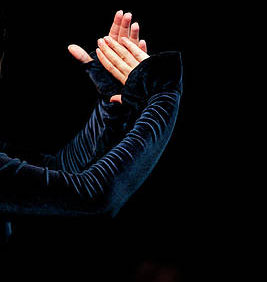
This is a great article about defining Flamenco and the mystery of how the music can emanate both from within and externally simultaneously.
Explanations about the Art of Flamenco are often given with rather vague if not contradictory generalities to be of much use to anyone other than aficionados.
I think this article by Jason Webster is so perceptive I have posted in its entirety.
BY JASON WEBSTER | FROM THE SPRING 2018 ISSUE OF CLASSICAL GUITAR
A strange question, you might think. Everyone knows what flamenco is: A rich musical and dance heritage from southern Spain that today enjoys official protection from UNESCO, no less; a powerful art form, instantly identifiable, that attracts and repels with equal force, and that has become the single most emblematic soundtrack to any Hispanic experience. No film, documentary, or television program that has even a passing reference to the Spanish-speaking world is complete without a few notes of flamenco guitar laid over sultry, sunny images, with perhaps a clicking castanet or two thrown in for good measure. No, the usual question posed by those with any interest in the matter is how do you do flamenco?
And yet the first question is the more important, for it can lead us toward the essence of flamenco itself, its being, its quiddity. One can spend a lifetime—or even several—trying to master its various techniques. And while this is of the utmost importance for anyone wanting to perform flamenco, or merely deepen their understanding of it, the approach effectively places the individual on the outside of the art form, knocking on the door in the hope that one day it will open and they will be allowed in.
At some stage in the student’s development, however, there needs to occur a kind of leap, a shift, an understanding that as they were trying to push their way in from the outside, a back door was open to them all the time. And the key to this alternative way in is a realization that no distinction exists between the individual and flamenco, the performer and the art. Rather, the two are joined in a flowing continuum: the music emanates from both within and without, and is a simultaneous expression of “self” and “otherness.”
This experience is not unique to flamenco, and many readers will recognize it from their own playing of other styles, or from their nonmusical artistic endeavors. It is, I suspect, a phenomenon common to all true artistic modes of expression, from painting and photography to writing, music making, and the more subtle martial arts. Yet each art form brings its own flavor to this universal truth, and allows for differences and nuances in exploration and self-expression. As with a kaleidoscope, each twist of the tube brings a new pattern, even though it remains pointed at the same object. So what might the particular flavor be in the case of flamenco?
Each individual will have his or her own unique answer to this question, testament to the richness and the multidimensional quality of what we are talking about. It is, in fact, a question I have put to several flamenco performers over the years. The comments that came back differed every time, yet in essence they shared something similar, not least an initial silence and reflection, and an understanding that this was a matter to be treated with respect.
Nonetheless, it is worthwhile exploring certain possibilities here, if only to engage readers and perhaps stimulate their own thinking on the subject. So, what is flamenco?
The first quality I suggest—and I suspect it is one that springs to many people’s minds—is passion. An over-used word, admittedly, and yet one that needs to be understood beyond the narrow confines of romantic and erotic love, in its full meaning of “powerful emotion,” “transformative experience,” and “suffering.” “Passion” in the Middle Ages referred most frequently to the death of a Christian martyr. These broader connotations at once capture something essential of the flamenco experience: images of the fiery dance; the tight, intense expression on the face of a cantaor as they explore and transmit the most profound feelings, ones that their audience may now be feeling for the first time in their lives. The aching, haunting beauty of a Soleá; the sensual release of a Tango; the melancholy other-worldliness of a Seguirilla—all of this can be expressed in the single word “passion,” a quality which, while certainly not unique to flamenco, is an essential aspect of its inner reality.
A second possibility I want to explore here is “madness.” There is something unbalancing about flamenco, particularly in a Bulería, a palo, or flamenco style, that has come to dominate in the past few decades, with ever faster and more complicated rhythms. Listen to this style of modern flamenco for an hour or two and you can come away feeling positively unhinged. Study the lives of some of the flamenco greats, and a sense of madness at the heart of the art form becomes even stronger, with not-infrequent tales of knife fights, murders, drug-taking, jail sentences, and periods in lunatic asylums. Not for nothing was one of the most well-known figures of early flamenco known as “el Loco Mateo”—Mad Matthew.
Part of the greatness of flamenco, however, is, as with other true art forms, its ability to reflect something of ourselves back to us. A certain madness lies at the heart of flamenco, true, and yet perhaps it does so in order to show us an essential madness in our own condition. The world is upside-down, as prophets and visionaries have tried to remind us throughout human history. This understanding appears to be buried within flamenco itself, and if the music elicits a “mad” response within its performers and audience, I wonder if it does so in order to give us an experience of this very truth.